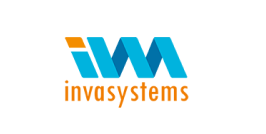Replacement of WWI with PDF in SAP RM-PLM

When it comes to SAP RM-PLM (Recipe Management – Product Lifecycle Management), document generation plays a big role in ensuring smooth operations—especially in industries like chemicals, pharma, and manufacturing where compliance, transparency, and speed are crucial. As businesses look to modernize their systems, the shift from WWI to PDF formats has become a key consideration. This WWI vs PDF comparison highlights the evolving needs of document generation, offering insights into performance, flexibility, and future-readiness.
For years, WWI (Windows Word Processor Integration) has been the go-to solution in SAP for generating formatted reports, labels, and regulatory documents. But times have changed—and so has technology. It’s time to ask the question:
Is WWI still serving your business, or is it holding you back?
Let’s know why replacing WWI with PDF-based generation in SAP PLM could be a game-changer for your organization.
What is WWI in SAP RM-PLM?
WWI stands for Windows Word Processor Integration. It’s an older tool used within SAP environments to create documents using MS Word templates.
In SAP Recipe Management, WWI is commonly used to generate:
- Specifications (recipes, substances, materials)
- Labels
- Reports
- Regulatory compliance documents
But here’s the catch—WWI is dependent on Microsoft Word, which means you’re tied to a Windows environment and specific configurations.
What is PDF Document Generation in SAP RM-PLM?
PDF generation is the modern alternative that allows you to generate documents natively within SAP—no external Microsoft Word dependency. Instead of creating WWI templates, PDF templates are defined using Adobe Lifecycle Designer or SAP’s Adobe Document Services.
With PDF generation, you get:
- Platform independence
- Faster performance
- Improved document consistency
- Better integration with cloud-based environments
WWI vs PDF: What’s the Difference?
| Feature | WWI | PDF (Adobe Forms / SAP ADS) |
| Dependency | Microsoft Word & Windows OS | Platform-independent |
| Template Tool | Word-based templates | Adobe Lifecycle Designer |
| Deployment | On-premise (typically) | On-prem or Cloud |
| Performance | Slower, heavier processing | Faster and more scalable |
| Maintenance | Complex (template versioning issues) | Easier with centralized form management |
| UI/UX Design Capabilities | Limited formatting options | Advanced layout and design features |
| Future-readiness | Outdated | Aligned with SAP’s cloud-first strategy |
Why Replace WWI with PDF in SAP RM-PLM?
Cloud-readiness
As businesses migrate to SAP S/4HANA and the cloud, WWI becomes a roadblock. PDF solutions, on the other hand, are cloud-compatible and align better with SAP’s future roadmap.
Simplified IT landscape
Removing WWI means fewer moving parts—no WWI servers, no Microsoft Word dependencies, and less IT overhead.
Better document control
PDF forms allow for more secure, stable, and traceable documents—essential for compliance-heavy industries.
Enhanced performance and scalability
PDF generation is faster, making it ideal for high-volume document environments.
Cost efficiency
There is no hidden costs of maintaining legacy WWI infrastructure and support. PDF generation provides a more streamlined and cost-effective alternative.
So, Is It Time to Move On?
If your organization is still relying on WWI, it might be time to reconsider. While WWI served its purpose in the past, PDF-based document generation is better suited for modern IT ecosystems, cloud environments, and future growth.
Whether you’re a CISO concerned about security, a CXO looking to streamline processes, or an IT professional wanting better maintainability—switching from WWI to PDF in SAP RM-PLM is a smart move forward.
WWI vs PDF : The Bottom Line
WWI had its moment—but in today’s fast-paced, cloud-first world, it’s simply not enough. As organizations embrace digital transformation and move towards SAP S/4HANA and cloud-based environments, continuing to rely on legacy tools like WWI can become a bottleneck.
PDF-based document generation offers a smarter, faster, and more scalable way forward—one that aligns with modern IT strategies and business needs. By making the switch, you’re not just upgrading a tool—you’re laying the foundation for better performance, stronger compliance, and future-ready operations.
Whether you’re a decision-maker evaluating long-term ROI or an IT leader looking to simplify your landscape, the message is clear:
It’s time to retire WWI and embrace the power of PDF in SAP PLM.
Ready to make the shift?
Embrace a modern, more efficient way to handle document generation in SAP PLM, with Invasystems.
If you’re looking for expert guidance on making the switch, we’re here to help.



